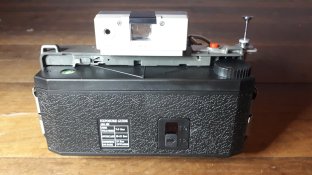The big savings are in the d*g*t*l domain. Some poor blighter watches a YouTube review and believes this new camera will transform his pictures. Not that he ever prints any, but nonetheless.. Eighteen months down the line the manufacturer is discounting the camera for half the original retail, with used models selling for proportionately less. Compared to digi, film gear values are the gold standard, and I'm not talking Kodak 200.
Regarding tax the issue is not the principle, but the application. Wage slaves pay most - it disappears from your salary before you get a sniff of it - while large corporations juggle it into non-existence. Even the self employed can offset new equipment against taxation. The toughest threshold is the poor-but-hardworking constituency, whose endeavours keep them out of state aid but are hit from every side if they aspire to more than breathing.
It won't suit the fine print advocates, but the cheapest way of getting a picture from film to paper is digital printing. With a good scan and judicious tweaking in post, you can take advantage of the volume, technology and competitive nature of digital photo finishers, and emerge with a fair imitation of a film photograph. I compile themes for books and prints awaiting my lab's special offers that come round twice a year of 50% discount. Who would have thought back in the 1990s that you could have a large, hard bound, nicely printed book of 80 images for £20 - 30?











